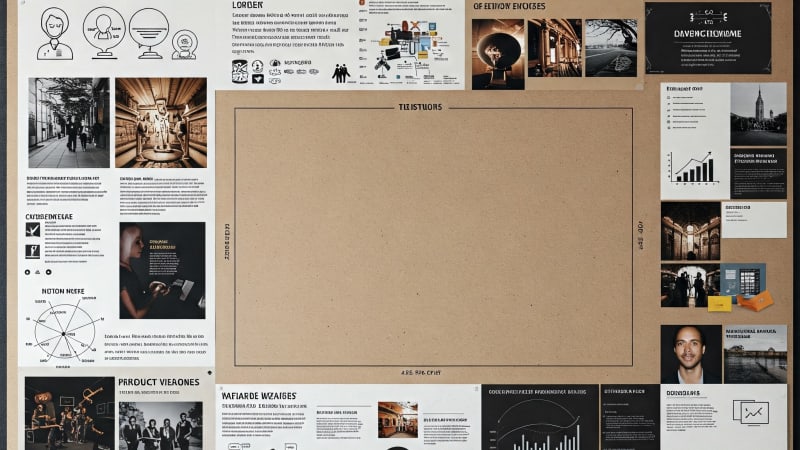
Starting a new product can feel overwhelming, so many decisions to make, so much uncertainty. Enter the Product Vision Board, a straightforward yet powerful tool designed to cut through the noise and provide clarity on what truly matters. By outlining your product’s vision, target audience, user needs, features, and business goals, this tool helps guide early-stage development with focus and alignment.
What is a Product Vision Board?
The Product Vision Board is your blueprint for understanding the “why” behind your product. It condenses your strategy into five critical elements:
-
Vision – What’s the big picture? Why does your product exist in the first place? Your vision defines the broader purpose of the product, where you want to go in the long run.
-
Target Group – Who exactly is this product for? The more precise you can be about your audience, the better. Instead of thinking about a broad customer base, hone in on a specific target group whose needs are most pressing.
-
Needs – What problems are you solving for your users? The key is understanding the pain points and desires of your target group, so you can focus on delivering the most value where it matters.
-
Product – What features will address those needs? Here, it’s not just about listing features, it’s about clarifying how your product’s unique capabilities meet the needs of your audience.
-
Business Goals – How does this align with your company’s strategic objectives? A product without a business case is just a hobby, so it’s important to connect the dots between your product and broader business goals.
Why Use a Product Vision Board?
A Product Vision Board is an indispensable tool for teams in the early stages of product development. It acts as your strategic compass, ensuring that every decision aligns with your overarching vision. Without this focus, it’s easy for teams to drift, adding features or chasing ideas that don’t contribute to the product’s core purpose.
Here’s why it matters:
-
Clarity: It sharpens your focus on what’s truly important. Instead of getting bogged down in unnecessary details, you maintain a clear path towards your product’s main objectives.
-
Alignment: It ensures that everyone - developers, designers, product managers, and stakeholders - are on the same page about what you’re building and why.
-
Communication: Having a visual and easy-to-understand representation of your product vision helps you communicate your strategy effectively, both internally and externally.
When Should You Use It?
The Product Vision Board shines brightest during the concept phase. This is when you’re validating ideas, conducting user research, and shaping your initial strategy. It’s the tool that gets you and your team aligned before diving into detailed plans like a roadmap or feature backlog.
It also works well as a living document that you can revisit as your product evolves. Even if you pivot, your board can adapt, helping you refocus without losing sight of the bigger picture.
Key Elements of the Product Vision Board
Let’s take a closer look at each element of the board and how they contribute to product success:
-
Vision: Think long-term. Your product vision isn’t just what you’re building today, but what impact you want to have in the future. This can range from improving customer experiences to changing how an industry operates.
-
Target Group: Get specific. It’s tempting to think your product will serve everyone, but focusing on a particular segment allows you to tailor features and messaging that resonate more deeply with your intended users.
-
Needs: Focus on solving the right problems. If you don’t have a clear understanding of your users’ pain points, your product risks becoming irrelevant.
-
Product: This is where your product’s key features come into play. How does your product solve the problems you identified? Every feature should have a purpose tied back to user needs.
-
Business Goals: What does success look like? Whether it’s market penetration, revenue targets, or customer retention, your product’s goals should support the larger business strategy.
How to Implement the Product Vision Board
To create your Product Vision Board, gather your team and start with the vision. Have a brainstorming session where you define the long-term impact you want your product to have. From there, work through each of the five sections, ensuring that your ideas flow logically and align with each other.
Don’t overcomplicate it, the beauty of this tool lies in its simplicity. You can create your Product Vision Board on a whiteboard, in a spreadsheet, or use one of the many templates available online. The format isn’t as important as the content.
Final Thoughts
A Product Vision Board may seem basic, but it’s a foundational tool that keeps your team focused, aligned, and working towards a shared vision. Especially during the early stages, this clarity can make all the difference between a successful launch and a misaligned product that doesn’t meet market needs. Use it to anchor your decisions, communicate your strategy, and stay on track as your product evolves.